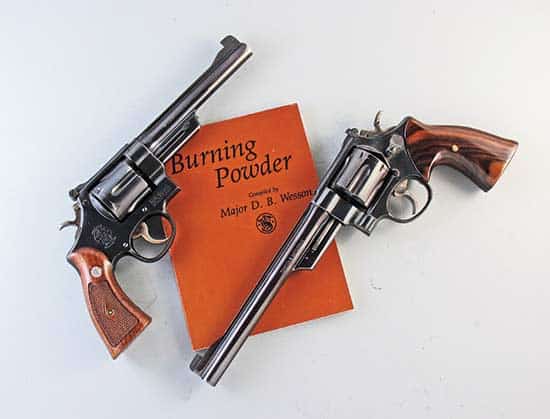D.B. Wesson
Col. Doug Wesson of Smith & Wesson is responsible for the arrival of the first Magnum—the .357—and also was true pioneer handgun hunter. In 1930, S&W chambered the .44 Special Model of 1926 in a .38 Special loaded heavier than standard to come up with the .38/44 Heavy Duty. By using the N-Frame as the platform, the .38 Special went from a muzzle velocity of around 850 fps to 1,150 fps. The S&W .38/44 Outdoorsman made the .357 Magnum possible and Phil Sharpe was a real driving force behind it. He felt the .38/44 Outdoorsman could handle pressures of at least 35,000 psi and even went so far as to have cartridges made for his use 1/10-inch longer calling them the “.38 S&W Magnum.”
On a hunting trip with Col. D.B. Wesson, a pair of the heavy-framed Outdoorsman revolvers were used with a large assortment of handloads developed and previously tested by Sharpe. In the field they proved entirely practical, and Col. Wesson set to work on a new sixgun the two of them planned in the field.
In 1935, the .357 Magnum was born. These were custom sixguns built to each customer’s specifications as to barrel length, sights, and even sighted in for a specific load and distance. These early hand-fitted revolvers are now known to collectors as Registered Magnums. To promote the new .357 Magnum, Col. Wesson used both 6-1/2- and 8-3/4-inch versions of the new gun and cartridge to take elk, antelope and black bear. He even went to Alaska with the hopes of taking a brown bear. He was unable to find one of the big bears and after contemplation felt it was a good thing he had not done so. In later years both of these early .357 Magnum revolvers were owned by Col. Rex Applegate and it was my privilege to handle them.





